– MCNP Conservator Ebog Sylvain Hector says the park has good facilities and natural attractions
By Ikome Christie-Noella Eposi in Buea
In a bid to conserve biodiversity, promote ecotourism and support community development, the Mount Cameroon National Park is a biodiversity hotspot very rich in diverse flora and fauna and also host great ecotourism potentials that need to be promoted.
In an interview with the press, the conservator of the MCNP Ebog Sylvain Hector stated that the role of Mount Cameroon National Park in the race is to promote the value of the protected area which involves ecotourism as well as the biodiversity found in the protected area. “We are here to promote our park which has the ecotourism and development unit, the collaborative management which permits us to work with the communities and protect the integrity of the protected area with the community. We are also here to show the communities what we have inside our protected area”.
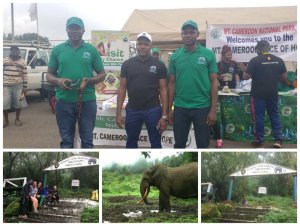
“This distance covered by athletes in this race takes place in more than half of the protected area. We also use this opportunity to inform the people coming out of Buea that we have very good facilities in the protected area such as lodges, and other natural attractions (wildlife, vegetation and land farms) all found in the protected area”. He averred.
According to the head of the ecotourism unit at the Mount Cameroon National Park, Chafoh Tazeh, the park is a touristic destination. “We have a lot at the Mount Cameroon National park in as much as eco-touristic potentials are concerned. We have beautiful landscapes; we have the wildlife which has three categories of animals (elephants, chimpanzees and the drills francolin). We also have the caves in the MCNP. We have lakes and then the summit itself. All of these are found in the MCNP.
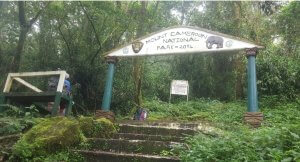
As far as the promotion of ecotourism and working with communities is concerned, Nelson Ikomey, the head of the collaborative management unit at the MCNP said the park is surrounded by 41 villages with a population of about 100,000 people. “The park collaborates with all the 41 villages through their village forest management committees who work directly with the park such that if we have park management activities, they are there to assist the park. In relation to ecotourism we have 13 local tour organizations that work with the park by facilitating eco-tourism activities inside the national park. He added that before any illegal activities takes place in the park; it has to pass through the communities. The village forest management committees are like our eyes and ears in the communities and they always revert to us before we take actions.
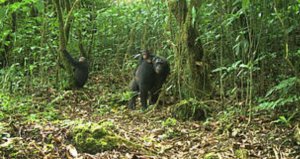
Throwing more light on challenges faced by the MCNP especially in terms of the post-race cleanup, the conservator added that waste management after the race is always a big problem. “After the race nothing is done to clean the park and the waste which is deposited in our protected area is not good for the biodiversity and the environment. The protected area needs to be kept clean after the race”.
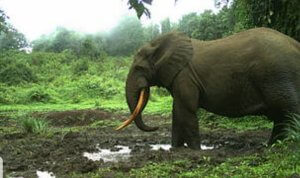
He appealed on the officials/organization team involved to work on collaboration terms with the MCNP as concerns the cleaning of the park after the race.
Located in the South West Region of Cameroon, the park seeks to safeguard the animal and plant species and their habitats, regulate the hydro geographical regime of the area, explore potential sources of revenue through ecotourism, safeguard the forest, contribute to the amelioration of the livelihood and the socio-economic conditions of the surrounding populations, promote employment and to promote the image of the country as far as biodiversity preservation is concerned.
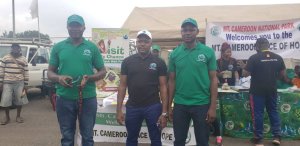
Created through Decree No.2009/2272/PM on December 18 2009, the Mount Cameroon National Park is equally host to some natural attractions such as wildlife (Elephant, Chimpanzees, drills, Francolin), Vegetation (Lowland forest sub montane forest, Montane forest, Montane grassland, Alpine grassland) and land forms( Lava flows, crater lakes, waterfalls, craves, valleys, springs). The MCNP has a total surface area of 58,178 ha and is located between 4.055-4.378 N and 9.031-9.294 E.